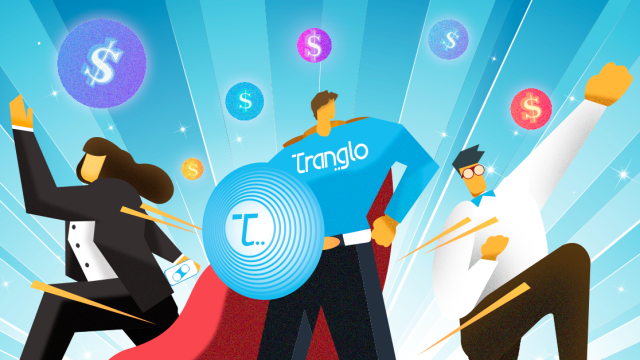Remittance is a part of migration culture, which is a part of ASEAN culture. Southeast Asians often migrate to seek economic opportunities. This contributes to the flow of ASEAN remittances back to their home countries. The World Bank’s latest data showed that post-COVID economic rebound contributed to a record 8.6% growth of remittance to low- and middle-income countries (LMICs) with flows reaching USD605 billion in 2021 compared with USD540 billion in 2020.
This resilience is testament to the magnitude of the ASEAN remittance market and the potential of the industry’s blockchain future.
The strength of ASEAN remittance
The Philippines and Vietnam were among the top 10 remittance recipients in the world in 2021, receiving USD37 billion and USD18 billion respectively. According to the World Bank, the Philippines benefited from employment recovery in the United States, which accounted for 40% of its remittance value.
As countries recover from the pandemic slowdown, industries and job markets in developed nations are once again turning to migrants to fill in the gaps, particularly in the hospitality sector. This is where skilled ASEAN migrants come into play. In August 2021, Germany signed an agreement with Indonesia to increase the recruitment and placement of Indonesian nurses. Meanwhile, Australia is offering an agriculture visa to attract migrant workers and address labour shortages. As of April 2022, it has signed a memorandum of understanding with Vietnam, and is negotiating with several other ASEAN countries. Even intra-ASEAN migration is picking up — workers from Myanmar, Laos, Cambodia and Vietnam, yearly recipients of roughly USD2.8 billion in remittances from Thailand before the pandemic, are returning to the country.
Challenges to ASEAN remittance
The same World Bank report pointed out that remittance flows to LMICs (excluding China) were larger than foreign direct investments and official aid figures. However, challenges, such as high transaction costs, have restricted the amount of money being sent home.
The global average transaction cost of sending remittances stood at 6% in 2021, double the United Nation's target of 3% (by 2030). One of the reasons for this is the involvement of many intermediaries in the payment process — the sending bank, correspondent banks and the destination bank — all charging a service fee and adding to the total processing time. World Bank's data also showed that costs tend to be higher when sent through banking channels rather than alternative ones like digital or cash-to-cash services. This means that official banking channels may not the best option for cross-border payments, especially for the underserved majority in rural ASEAN who still don’t have a bank account.
The big, digital emigration
According to a Facts and Factors report published on GlobeNewswire, global digital remittances are expected to climb at a CAGR of 13.8% from USD14.5 billion to USD35.8 billion by 2026. The report notes that payment automation and digitalisation will drive business expansion, with digitally savvy consumers favouring digital remittances because of the shorter transfer time.
The projection also highlights a riveting point: the Asia Pacific digital remittance market is expected to be the fastest-growing market, thanks to mobile payment solutions. If anything, the COVID-19 pandemic has contributed to the urgency of digital transformation of the ASEAN remittance market. Southeast Asians have taken to smartphones and digital remittances.
ASEAN governments are also doing their part. The ASEAN Policy Brief published in April 2021 noted that “ASEAN aims for seamless cross-border payments in the region through the harmonisation and modernisation of payments infrastructure, supported by initiatives in related areas such as digital data governance, cybersecurity, online dispute resolution, and consumer protection for e-commerce”.
Digitalisation efforts are reportedly underway to standardise the policies and frameworks of the ASEAN remittance market. An ASEAN Framework on Digital Data Governance has also been developed to guide the cross-border data flow mechanism for ASEAN. It ensures businesses in ASEAN are equipped with means to ensure that data is protected when being transferred to another party across the border. This should increase interoperability.
A blockchain-driven ASEAN remittance
Smartphones have certainly made cross-border payments easier. But that is an old story. Blockchain and distributed ledger technology (DLT) have further transformed cross-border payments by making transactions even faster, more transparent and secure.
Blockchain transactions are highly secure because the records of transactions on a digital ledger are immutable and cannot be altered, reversed or tampered with. A typically lengthy verification process can be done in less than a minute, with updates in real time. According to Juniper Research, blockchain payments are predicted to exceed USD4.4 trillion by 2024.
As mentioned above, a DLT-based system can free up valuable resources for businesses, streamlining the end-to-end payment process. The integration of Tranglo Connect and RippleNet is one such example. This partnership brings a revolutionary instant payment and settlement system, the On-Demand Liquidity (ODL), to Asia Pacific and beyond. Our article here highlights how businesses will benefit from this: ODL eliminates pre-funding, so companies get maximum working capital to grow other areas of their business. That is a game changer for ASEAN corporates and consumers.
With ASEAN embracing stronger cooperation in developing mobile payment platforms that offer better accessibility, and showing more willingness in supporting alternative services and products like the blockchain-powered ones, its remittance market is primed for success.
A Tranglo cross-border partnership can secure your valuable cash flow by removing unnecessary obstacles to global payments. Contact us today to get a professional consultation at no charge.







